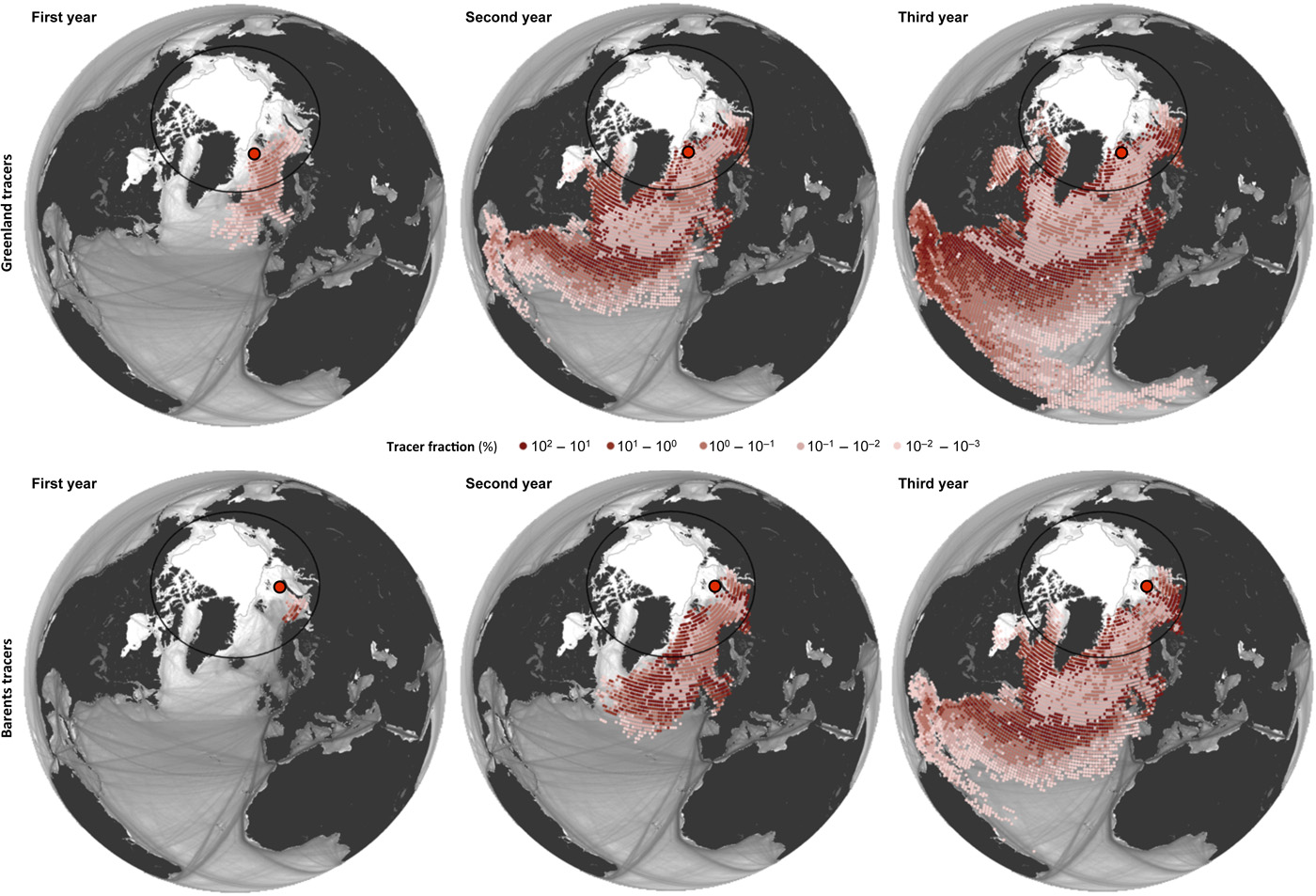Currents Carry Atlantic Trash into the Arctic
In a new study published Wednesday in the journal Science Advances, a team of scientists from the University of Cádiz reported that ocean plastic from the Atlantic is accumulating in the Greenland and Barents Seas, carried north by currents and deposited in Arctic waters.
The authors used computer models of the Atlantic's Thermohaline Circulation currents alongside field surveys to show that the seas east of Greenland "would be a dead end for [a] plastic conveyor belt." The plastic debris they found at 42 survey sites was highly fragmented and included very little plastic film, suggesting more durable "aged debris" that originated in population centers far away.
The study builds on previous work, including research that found tiny bits of plastic (microplastics) in ice cores taken around the Arctic Circle, and it contributes to a growing body of evidence that floating trash is getting trapped in the Arctic and dropped onto the seafloor. It also complements previous research on the growing quantity of partially degraded plastic waste accumulating in subtropical ocean gyres (SOGs), a phenomenon that has gained widespread media attention in recent years.
The study relied in part on 42 net tows conducted during the schooner Tara's 2013 expedition, which went around the borders of the Arctic ice pack through the Northeast and Northwest passages to collect data for multiple research groups. These samples found relatively low levels of plastic in Arctic waters, except for the Barents and Greenland seas, which may contain as much as 95 percent of the floating plastic debris above the Arctic Circle.
The authors believe that the plastic undergoes a one- to three-year northward journey along the northern Atlantic branch of the Thermohaline Circulation, which passes between Iceland and Scotland and into the Arctic Ocean. Simulations (below) suggested that the trash could originate as far away as the Gulf of Mexico.
 Darker red areas indicate potential points of origin for a theoretical bit of plastic (small red circle), by age of debris (simulation courtesy Cózar et al.)
Darker red areas indicate potential points of origin for a theoretical bit of plastic (small red circle), by age of debris (simulation courtesy Cózar et al.)
Lead author Andrés Cózar told the New York Times that the results were cause for concern. "We don't fully understand the consequences the plastic is having or will have in our oceans," he said. "What we do know is that [the] consequences will be felt at greater scale in an ecosystem like this."
The research was made possible by support from the Veolia Foundation, the Prince Albert II de Monaco Foundation, the Tara Foundation and the French Ministry of Foreign Affairs.
